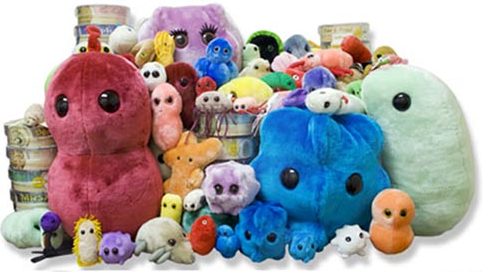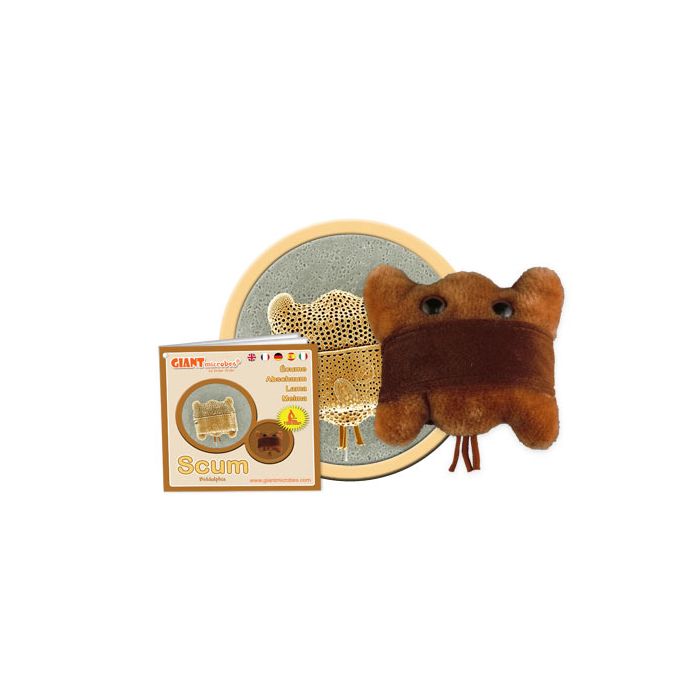Scum (Biddulphia)
Product Details
Additional Information
| Sizes | Giantmicrobes are based on actual microbes, cells, organisms and other critters, only 1,000,000 times actual size! Gigantic (GG) 40-60cm XL (XL) 25-38cm Original (PD) 12-20cm Minis (MM) 5-10cm each Keychain (KC) 5-10cm with clip |
|---|---|
| Materials | Plush from all new materials. Stuffed with polyester fiber fill. Surface washable: sponge with water & soap, air dry. |
| Packaging | Each plush microbe includes a printed card with fun, educational and fascinating facts about the actual microbe or cell. |
| Safety | Every product meets or exceeds U.S. and European standards for safety. For ages 3 and up. |
All about Scum (Biddulphia)
FACTS: Single-celled algae are known scientifically as phytoplankton, or “plant drifters.” Biddulphia is a type of phytoplankton that can be seen as light brown scum on the walls of your fish tank! (In the ocean, they are often found attached to surfaces such as seaweeds or rocks on the seafloor.)
Why do algae grow so well in your fish tank? Because fish produce nitrate and ammonia waste that are good fertilizers for scum and other algae. (And if your tank contains live plants, which need light to grow, so much the better!)
How do you keep aquarium scum from taking over your tank? Keep the water well-circulated and filtered. Test your water regularly for nitrate and ammonium and if the levels are too high do a partial water change. Also, algae eaters such as glass shrimp and small sucker-mouthed fish can keep the tank walls clean.
Finally, the skeleton of a Biddulphia is made from silica and can have intricate and elaborate pore and spine patterns. Diatomaceous earth, used in aquarium and pool filters, consists of fragments of ancient Biddulphia and other diatoms. Since diatoms have many tiny pores, diatomaceous earth can be used to filter particles as small as 2 microns – so even Biddulphia can help keep water clean!





